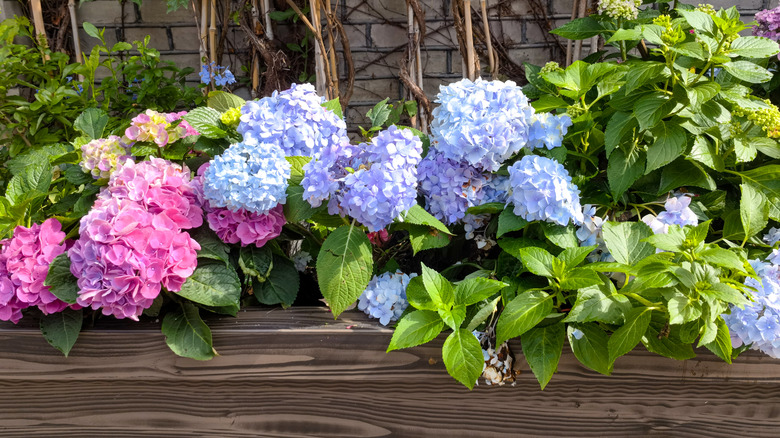The Household Staple That'll Help Your Garden's Hydrangeas Thrive
If you've noticed your hydrangeas looking a little lackluster or droopy, there's a surprising remedy right in your bathroom cabinet: Epsom salt. While most people think of it as a go-to for soothing sore muscles, it's also a powerful tool for your garden. Epsom salt is actually magnesium sulfate, a chemical compound that boost plant health. For hydrangeas, which are known to be thirsty and sometimes finicky flowers, adding Epsom salt to their care routine can lead to bigger, brighter blooms and stronger plants overall.
One of the ways Epsom salt works its magic is by helping hydrangeas produce more chlorophyll, the green pigment in plants that captures sunlight and powers photosynthesis. The magnesium in Epsom salt encourages chlorophyll production, allowing your hydrangeas to absorb more energy from the sun. Hydrangeas love moist, well-draining soil, and when you combine the right soil conditions with Epsom salt, you're giving your plants an extra layer of protection and nourishment.
To apply Epsom salt, mix one tablespoon with a gallon of water and use it to water the soil around your hydrangeas. Be sure to avoid splashing the leaves and blooms, as it works best when applied directly to the ground. Just be cautious not to overdo it, as too much magnesium can create toxicity in the soil, leading to leaf scorch. If you notice this, flush the area with clean water to dilute the buildup. A periodic soil test is a good idea to ensure you're keeping magnesium levels in check.
Why Epsom salt makes hydrangeas thrive
The secret behind Epsom salt's effectiveness lies in its nutrient-rich makeup. Despite the name, Epsom salt contains no traditional salt, making it perfectly safe to use in your garden without the risk of damaging your plants. Magnesium, one of its key components, helps hydrangeas absorb more nutrients from the soil, resulting in stronger stems and lusher leaves. This is especially helpful for hydrangeas that struggle with yellowing leaves, a common sign of magnesium deficiency. By providing a boost of this essential mineral, Epsom salt acts as a natural fertilizer, encouraging healthier growth and more abundant blooms.
One of the more exciting benefits of Epsom salt for hydrangeas is its ability to influence bloom color. Hydrangeas planted in acidic soil tend to produce blue flowers, while alkaline soil results in pink or red blooms. Since Epsom salt can slightly increase soil acidity, using it might shift your hydrangeas toward those coveted blue hues.
In addition to promoting vibrant blooms, Epsom salt also supports overall plant hydration. Hydrangeas are incredibly thirsty flowers and can wilt quickly if they don't get enough water. By improving their ability to absorb nutrients and water, Epsom salt helps your hydrangeas stay hydrated and robust, even during the heat of summer. If you've ever dealt with wilting hydrangeas overnight, you know how important proper hydration is. Another trick to prevent this is using alum powder, a simple solution that can help your hydrangeas retain water.

